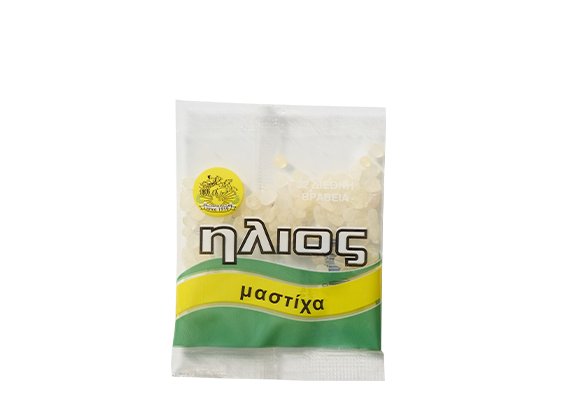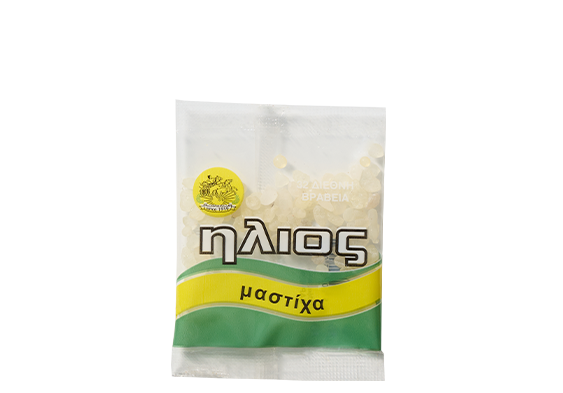

Mastic, like any other natural resins, is produced in “tears” or droplets. Mastic is a key ingredient in the Greek festive loaves of bread, such as Easter bread (“tsoureki”) and the traditional New Year’s cake (“vasilopita”).

Vegetarian

Aromatic

Gluten Free
| Sachet | 5gr |
|---|
In Greece, mastic is used in mastic liqueurs, such as Chios Mastiha, in a spoon sweet called “ypovrichio”, in beverages, chewing gums, sweets, desserts and breads. It is also used in traditional delights called “loukoumia” and in mastic ice cream. In desserts, as an ingredient of marmalades or desserts, mastic replaces cornstarch and gelatin.
Mastic is mainly used either as a flavoring agent or for its properties which are beneficial for our gums, like mastic chewing gums. It is also used in the production of cosmetics, like toothpaste, hair- and skin-lotions, and perfumes.
As a spice, in Greece mastic is used in beverages for its taste, in liqueurs, chewing gums, and various cakes, bakery products, spoon sweets and desserts. Sometimes it is also used in cheese production. Mastic is the main ingredient of the dondurma, as well as other sweets like “loukoumia”, giving them an unusual texture and a bright white color. In Lebanon and Egypt, the spice is used in many dishes, from soups with meat to desserts, while in Morocco the smoke of the resin is used to flavor water.